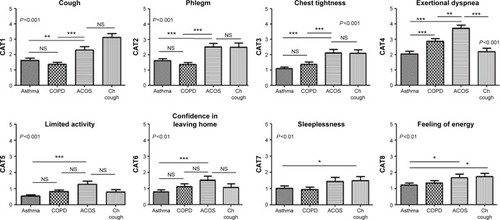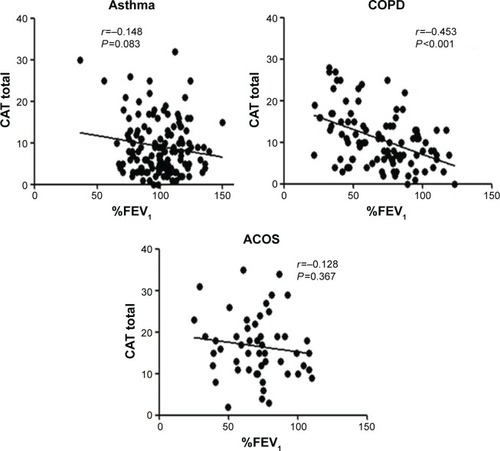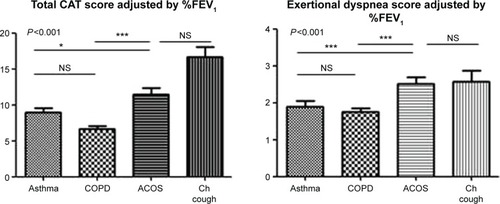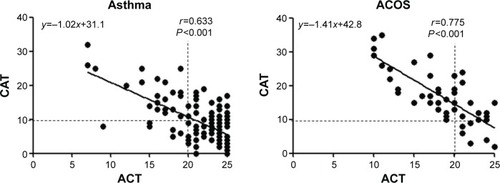Figures & data
Table 1 Patient characteristics
Figure 1 CAT component scores in patients with asthma, COPD, ACOS, and chronic cough.
Abbreviations: ACOS, asthma–COPD overlap syndrome; CAT, COPD assessment test; Ch cough, chronic cough; NS, not significant.

Table 2 Relationships between CAT scores and FEV1
Figure 2 Relationships between the CAT scores and %FEV1 in patients with asthma, COPD, and ACOS.
Abbreviations: ACOS, asthma–COPD overlap syndrome; CAT, COPD assessment test; %FEV1, percent predicted forced expiratory volume in 1 second.

Figure 3 Total CAT scores and exertional dyspnea scores adjusted by %FEV1 in patients with asthma, COPD, ACOS, and chronic cough.
Abbreviations: ACOS, asthma–COPD overlap syndrome; CAT, COPD assessment test; Ch cough, chronic cough; %FEV1, percent predicted forced expiratory volume in 1 second.

Figure 4 Relationships between the CAT scores and ACT scores in patients with asthma and ACOS.
Abbreviations: ACOS, asthma–COPD overlap syndrome; ACT, asthma control test; CAT, COPD assessment test.

